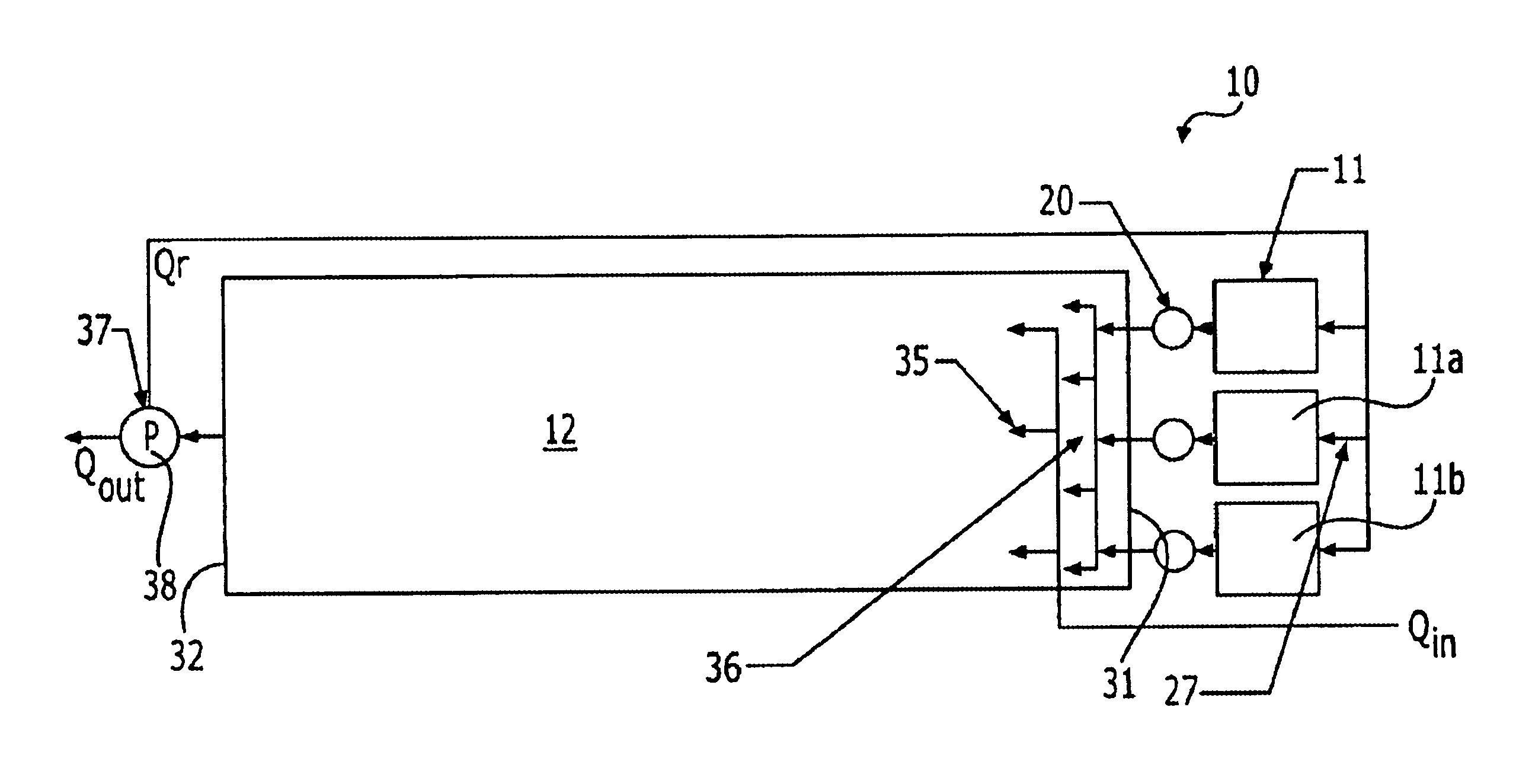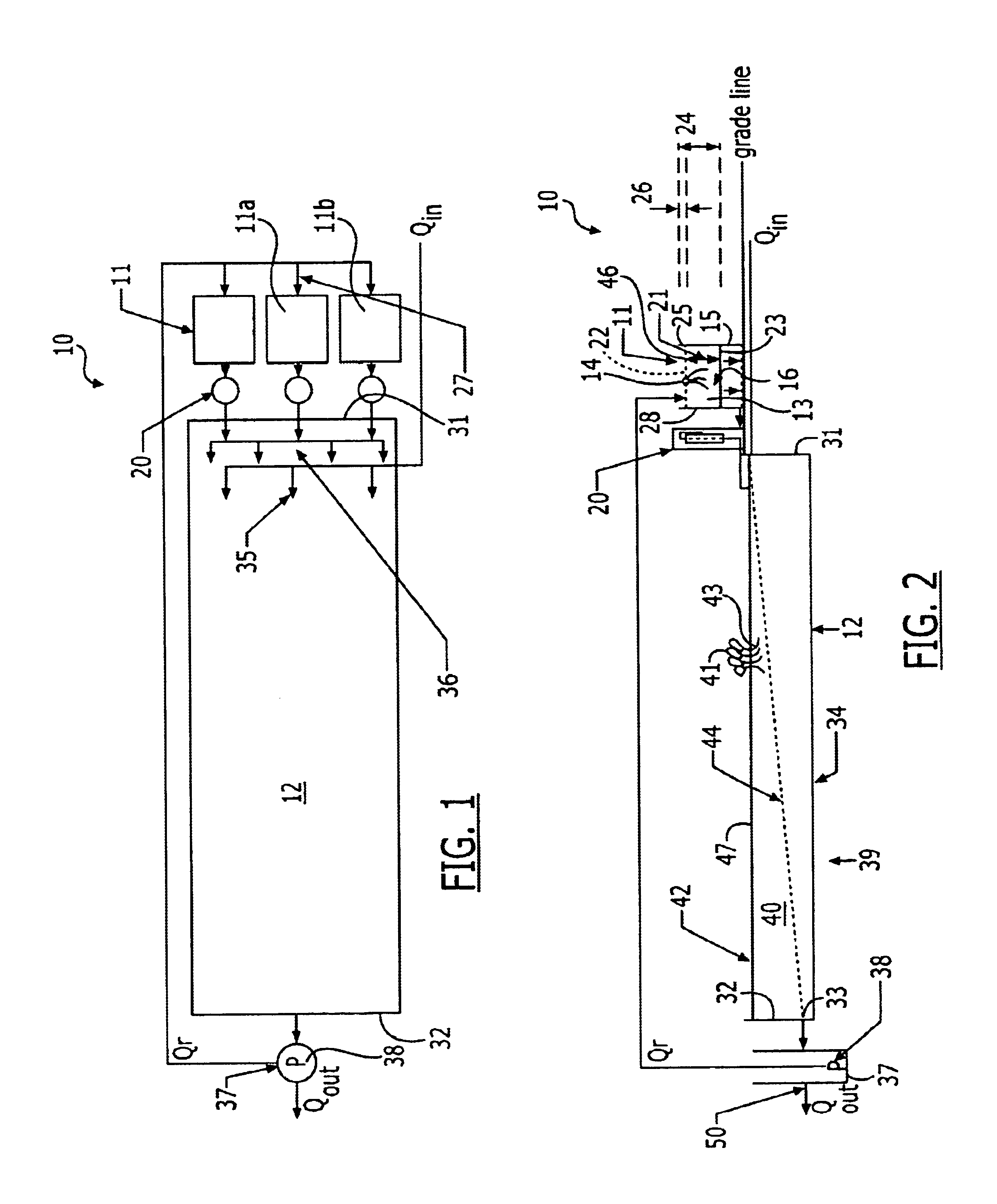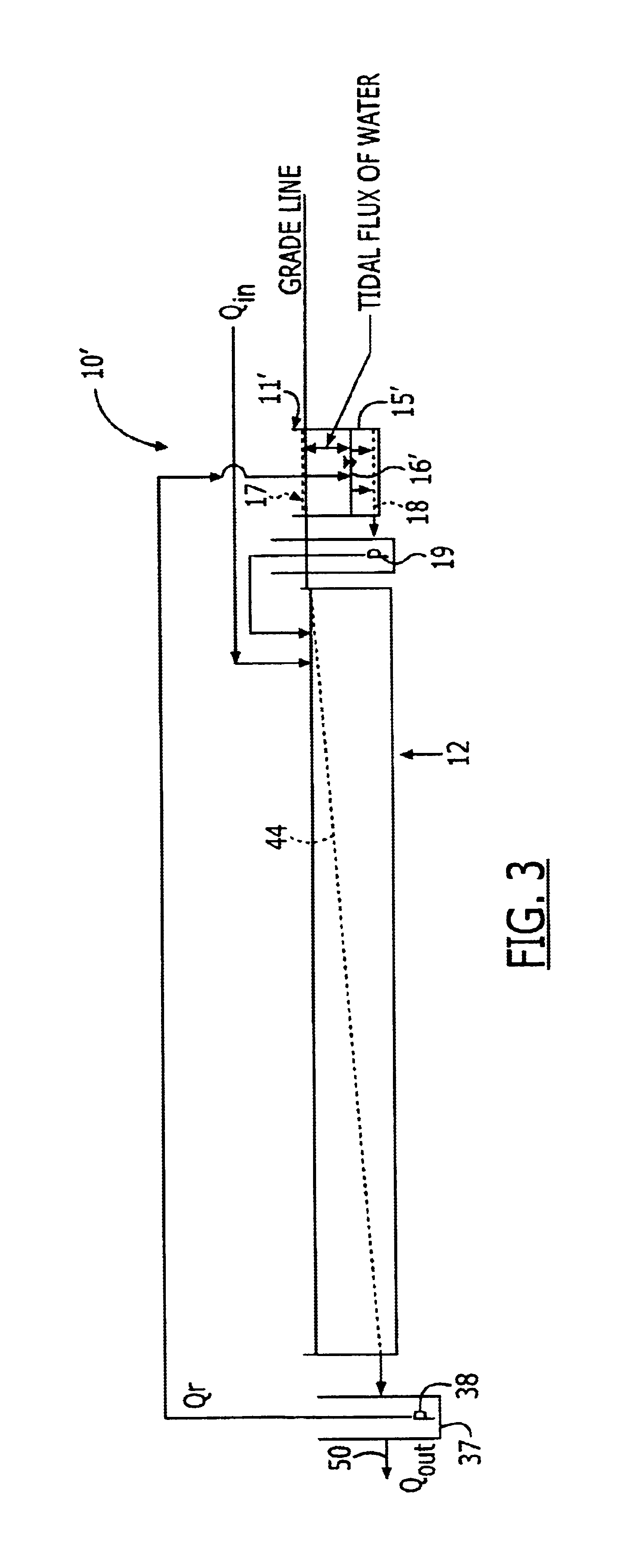Tidal vertical flow wastewater treatment system and method
a wastewater treatment system and vertical flow technology, applied in water cleaning, separation processes, filtration separation, etc., can solve the problems of poor denitrification performance of the tidal flow system, the inability to reliably meet tertiary treatment standards for bod/sub>5/sub>and tss effluent values of sshf wetland, and the notorious poor nitrification in sshf wetlands, etc., to improve the performance of substantially anaer
- Summary
- Abstract
- Description
- Claims
- Application Information
AI Technical Summary
Benefits of technology
Problems solved by technology
Method used
Image
Examples
Embodiment Construction
[0029]A description of the preferred embodiments of the present invention will now be presented with reference to FIGS. 1-3.
System Elements
[0030]A preferred embodiment of the present invention comprises a system 10 that includes a vertical flow marsh cell 11 in fluid communication with a subsurface horizontal flow wetland 12. The system 10 may be installed as depicted, or the marsh cell 11 and associated components may be added to an existing wetland 12 (“retrofit”) to improve the performance thereof. Preferably, depending upon the site characteristics, the system 10 may comprise a plurality of marsh cells 11 shown here as three marsh cells 11,11a,11b, configured in parallel, although this is not intended as a limitation. As these are substantially identical, only one marsh cell 11 will be described herein. In another embodiment (FIG. 3), a below-round system 10′ with a marsh cell 11′ is depicted.
[0031]In a preferred embodiment, the marsh cell 11 comprises a substantially impermeabl...
PUM
| Property | Measurement | Unit |
|---|---|---|
| depth | aaaaa | aaaaa |
| diameter | aaaaa | aaaaa |
| diameter | aaaaa | aaaaa |
Abstract
Description
Claims
Application Information
 Login to View More
Login to View More - R&D
- Intellectual Property
- Life Sciences
- Materials
- Tech Scout
- Unparalleled Data Quality
- Higher Quality Content
- 60% Fewer Hallucinations
Browse by: Latest US Patents, China's latest patents, Technical Efficacy Thesaurus, Application Domain, Technology Topic, Popular Technical Reports.
© 2025 PatSnap. All rights reserved.Legal|Privacy policy|Modern Slavery Act Transparency Statement|Sitemap|About US| Contact US: help@patsnap.com



